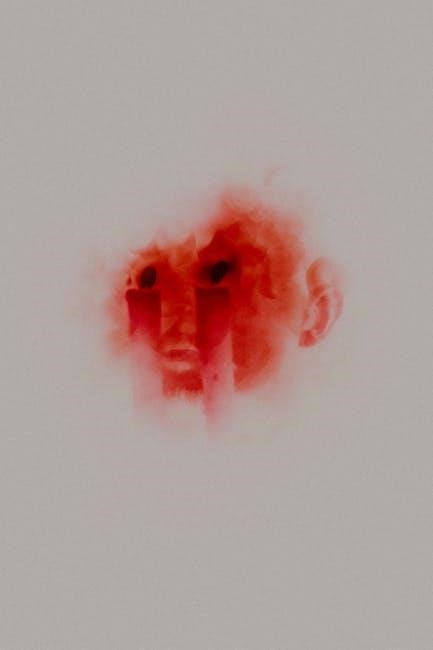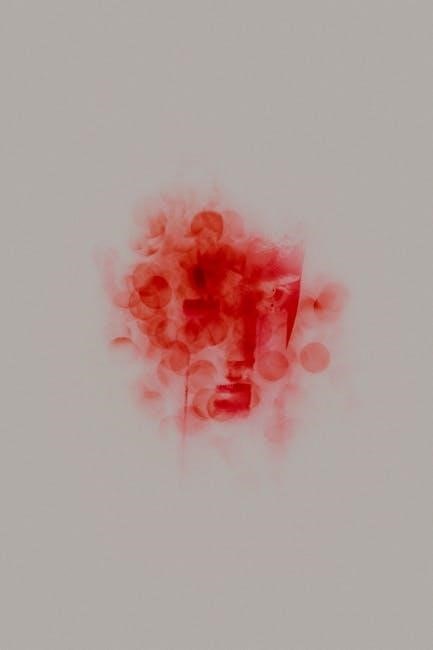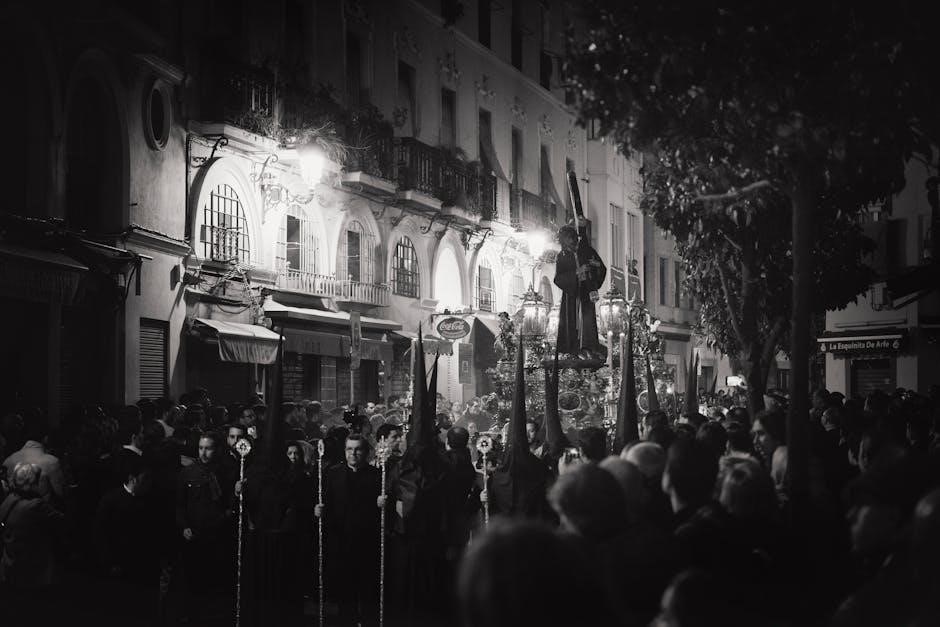Japanese Candlestick Patterns are a centuries-old trading tool offering a visual insight into market trends. This guide explores their history, types, and application in modern trading strategies, helping traders make informed decisions.
Overview of Japanese Candlesticks and Their Importance
Japanese candlesticks are a fundamental tool in technical analysis, offering a visual representation of price action. Originating in Japan centuries ago, they have evolved into a globally recognized method for understanding market dynamics. Each candlestick provides detailed information about opening and closing prices, high and low points, and market sentiment. Their importance lies in their ability to help traders identify patterns, trends, and potential reversals. By analyzing these patterns, traders can make informed decisions, making candlesticks an indispensable resource for both novice and experienced investors.
Why Japanese Candlestick Patterns Are Essential for Traders
Japanese candlestick patterns are essential for traders due to their ability to convey detailed market information visually. Each candle represents price action, offering insights into market sentiment and potential trends. By recognizing patterns, traders can identify opportunities for entries, exits, and risk management. These patterns are universal, applicable to all financial instruments and timeframes, making them invaluable for consistent trading strategies. Their visual nature allows for quick analysis, enabling traders to make informed decisions efficiently, which is crucial in fast-paced markets.
History and Origin of Japanese Candlesticks
Japanese candlesticks originated in 18th-century Japan, initially used for rice trading. They evolved into financial tools, providing detailed price action analysis and becoming foundational for modern trading strategies.
The Development of Candlestick Charting in Japan
Japanese candlestick charting emerged in the 18th century, initially used for rice trading in Japan. The method evolved over time, transitioning from rice markets to financial markets. Munehisa Homma, a legendary trader, refined these techniques, creating systematic strategies. His work laid the foundation for modern candlestick analysis, emphasizing psychological insights into market behavior. The development of candlestick charting in Japan marked a significant shift in how traders interpreted price movements, making it a cornerstone of technical analysis globally.
Munehisa Homma and the Birth of Modern Candlestick Analysis
Munehisa Homma, a legendary Japanese trader, is often credited with formalizing candlestick analysis in the 18th century. His innovative approaches introduced systematic methods for interpreting market behavior, emphasizing psychological insights. Homma’s strategies highlighted the importance of price action and market sentiment, laying the groundwork for modern technical analysis. His work remains influential, shaping how traders worldwide use candlestick patterns to predict market trends and make informed decisions.

Components of a Japanese Candlestick
A Japanese candlestick consists of four main elements: the body, wick, open, and close. The body represents price range, while the wick shows highs and lows.
Understanding the Structure of a Candlestick
A Japanese candlestick is composed of the body, wick (or shadow), open, and close. The body represents the range between the opening and closing prices, with color indicating direction. The wick shows the highest and lowest prices during the period, providing insights into market volatility. This structure allows traders to quickly assess price action and sentiment, making it a powerful tool for technical analysis. Each component reveals unique information about market behavior and potential price movements.
Interpreting Color and Shape in Candlestick Patterns
In Japanese candlestick patterns, color and shape are critical for analysis. A green or white candle indicates upward price movement, while a red or black candle signals downward movement. The shape of the candle reveals market sentiment: a long wick may indicate rejection, while a small body suggests indecision. Bullish patterns, like the hammer, often have small bodies and long lower wicks, signaling potential reversals. Bearish patterns, such as the shooting star, feature small bodies and long upper wicks, indicating weakness. These visual cues help traders interpret market behavior and make informed decisions.

Types of Japanese Candlestick Patterns
Japanese candlestick patterns are categorized into bullish, bearish, reversal, continuation, and indecision patterns. Each type provides insights into market trends, helping traders identify potential opportunities or risks.
Bullish Patterns: Identifying Upward Trends
Bullish Japanese candlestick patterns signal potential upward price movements, helping traders identify emerging trends. These patterns often form after a decline or at support levels, indicating buying pressure. Common bullish patterns include the Hammer, Piercing Line, and Morning Star. The Hammer, with its long lower wick, suggests a rejection of lower prices, while the Piercing Line confirms a bullish reversal. These patterns are invaluable for traders aiming to capitalize on upward momentum, offering clear visual cues of shifting market sentiment.
Bearish Patterns: Recognizing Downward Trends
Bearish Japanese candlestick patterns indicate potential downward price movements, helping traders spot emerging declines. These patterns often form at the peak of an uptrend, signaling selling pressure. Common bearish patterns include the Shooting Star, Evening Star, and Dark Cloud Cover. The Shooting Star, with its long upper wick, suggests a rejection of higher prices, while the Evening Star confirms a bearish reversal. These patterns are essential for traders to anticipate corrections or reversals, aiding in timely exit or short-entry decisions to manage risk effectively.
Reversal Patterns: Identifying Trend Changes
Reversal patterns in Japanese candlesticks signal potential trend changes, helping traders anticipate shifts in market direction. These patterns often form at trend extremes, indicating weakening momentum. Examples include the Hammer, Morning Star, and Shooting Star, though their interpretation varies by context. A Hammer, for instance, suggests a bullish reversal, while a Shooting Star signals a bearish one. These patterns are crucial for identifying turning points, allowing traders to adjust strategies and capitalize on emerging trends. Confirmation with other indicators or volume is often recommended for reliability.
Continuation Patterns: Confirming Ongoing Trends
Continuation patterns in Japanese candlesticks indicate that the current trend is likely to persist, providing traders with confidence to hold or enter positions. These patterns, such as the Rectangle, Triangle, or Senkou Span, form during periods of consolidation, where the market pauses before resuming its direction. They help traders identify areas of support or resistance and confirm the strength of the existing trend. By recognizing continuation patterns, traders can align their strategies with the prevailing market momentum, increasing the likelihood of profitable trades. Confirmation with other indicators or volume is often recommended for accuracy.
Indecision Patterns: Understanding Market Uncertainty
Indecision patterns in Japanese candlesticks reveal market uncertainty, where buyers and sellers are balanced, leading to indecision. These patterns, such as the Doji, Spinning Top, or High-Wave Candle, indicate hesitation. They often form at key levels, signaling potential trend reversals or pauses. Traders use these patterns to identify when a trend may lose momentum, helping them prepare for possible changes in market direction. Indecision patterns highlight the importance of confirmation with other indicators or price action to avoid false signals and make informed trading decisions. They are essential for understanding market psychology and potential shifts.
Popular Bullish Patterns
Bullish patterns signal potential upward trends, including Hammer, Morning Star, Piercing Line, and Golden Cross, helping traders identify buying opportunities in financial markets.
The Hammer (Martillo) Pattern
The Hammer (Martillo) pattern is a bullish reversal candlestick formation that appears at the end of a downtrend. It consists of a small candle body at the top with a long lower wick, indicating rejection of lower prices. The body can be either green or red, but the long wick is a key indicator of buying pressure. Traders often use this pattern to signal a potential trend reversal, as it shows that sellers were unsuccessful in driving prices lower. It’s frequently highlighted in patrones de velas japonesas PDF guides for its reliability in identifying bottoms.
The Morning Star Pattern
The Morning Star pattern is a bullish reversal signal, typically forming after a downtrend. It consists of three candles: a long red candle, a short candle (either red or green) with a small body, and a long green candle that closes above the midpoint of the first candle. This pattern signifies a shift in momentum from selling to buying pressure. Often discussed in patrones de velas japonesas PDF, it’s a reliable indicator of potential upward reversals, offering traders a clear signal to consider long positions.
The Piercing Line Pattern
The Piercing Line pattern is a bullish reversal signal that forms during a downtrend. It consists of two candles: a long red candle followed by a green candle that opens below the previous close but closes above the midpoint of the red candle. This pattern, often detailed in patrones de velas japonesas PDF, indicates strong buying pressure overcoming selling pressure. It’s a reliable signal of a potential trend reversal, encouraging traders to consider entering long positions. However, confirmation with other indicators is recommended for accuracy.
The Golden Cross Pattern
The Golden Cross is a bullish pattern signaling a potential uptrend. It occurs when a shorter-period moving average (e.g., 50-period) crosses above a longer-period moving average (e.g., 200-period). This crossover, often highlighted in patrones de velas japonesas PDF, indicates strengthening momentum and is frequently observed during market recoveries. Traders view it as a trusted signal to enter long positions, as it reflects improving market sentiment and strength. The Golden Cross is a widely recognized and reliable pattern for identifying emerging bullish trends.

Popular Bearish Patterns
Bearish patterns signal potential downtrends. The Shooting Star, Evening Star, Dark Cloud Cover, and Death Cross are prominent ones, often detailed in patrones de velas japonesas PDF.
The Shooting Star Pattern
The Shooting Star is a bearish reversal pattern appearing at the top of an uptrend. It features a small candle body at the bottom, a long upper wick, and little to no lower wick. This pattern suggests that buyers attempted to push prices higher but were overwhelmed by sellers. It signals a potential trend reversal, but confirmation is needed. Detailed insights into this pattern are often found in patrones de velas japonesas PDF guides, making them a valuable resource for traders seeking to master candlestick analysis.
The Evening Star Pattern
The Evening Star is a bearish reversal pattern that appears at the top of an uptrend, signaling a potential shift in market sentiment. It consists of three candles: a large bullish candle, followed by a small-bodied candle (often a Doji or Spinning Top), and a bearish candle that closes below the midpoint of the first candle. This pattern reflects weakening buyer strength and rising seller influence. Detailed explanations and examples are often included in patrones de velas japonesas PDF guides, making them indispensable for traders aiming to master reversal signals.
The Dark Cloud Cover Pattern
The Dark Cloud Cover is a bearish reversal pattern that typically forms at the top of an uptrend. It consists of a bullish candle followed by a bearish candle that opens above the first candle’s high but closes below its midpoint. This pattern signals a potential shift in momentum, as sellers begin to overpower buyers. It is often considered a precursor to a downward trend. Patrones de velas japonesas PDF guides frequently include detailed analysis of this pattern, helping traders identify and interpret its significance in various market conditions.
The Death Cross Pattern
The Death Cross is a bearish pattern indicating a potential reversal from an uptrend to a downtrend. It occurs when the 50-period moving average crosses below the 200-period moving average on a candlestick chart. This crossover is often seen as a sell signal, signaling weakened momentum and potential market decline; Patrones de velas japonesas PDF resources highlight this pattern’s significance, emphasizing its reliability in identifying broader market shifts. Traders often combine it with other indicators for confirmation, using tools like stop-loss orders to manage risk effectively.

Using Japanese Candlestick Patterns in Trading
Japanese candlestick patterns are invaluable for traders seeking to identify market trends and potential reversals. By combining these patterns with other technical indicators, traders can confirm trading decisions and enhance profitability. The patrones de velas japonesas PDF provides detailed insights into practical applications, helping traders refine their strategies and make informed choices in dynamic markets.
Combining Candlestick Patterns with Other Indicators
Combining Japanese candlestick patterns with other technical indicators enhances trading accuracy. Tools like RSI, moving averages, and Fibonacci levels provide context, confirming signals. The patrones de velas japonesas PDF highlights how these integrations improve decision-making. For example, a Hammer pattern paired with oversold RSI levels strengthens bullish signals. This hybrid approach reduces false signals, helping traders refine strategies and execute trades with confidence. Blending candlesticks with indicators creates a robust framework for identifying trends and potential reversals;
Case Studies: Successful Trades Using Candlestick Patterns
Real-world examples from patrones de velas japonesas PDF demonstrate how traders profit using candlestick patterns. A notable case involves the Morning Star pattern, signaling a bullish reversal in a stock nearing support levels. Another example highlights the Hammer pattern, identifying a potential bottom in a downtrend. These case studies reveal how recognizing patterns like the Piercing Line or Dark Cloud Cover can lead to timely entries and exits. They underscore the practical application of candlestick analysis in profitable trading strategies.

Advantages and Limitations of Candlestick Patterns

Advantages and Limitifications of Candlestick Patterns
Candlestick patterns offer simplicity and visual clarity, making market trends and reversals easy to identify. However, they require accurate data interpretation and can be influenced by market volatility.
Pros: Why Traders Rely on Candlestick Analysis
Candlestick patterns are widely embraced by traders due to their visual simplicity and ability to capture market psychology. They provide clear signals for potential trend reversals or continuations, enabling timely decisions. The patterns are applicable across various financial instruments and timeframes, making them versatile tools. Additionally, candlestick analysis is rooted in centuries of historical data, offering a proven framework for understanding market behavior. Traders appreciate how these patterns complement other technical indicators, enhancing overall market analysis and strategy development.
Cons: Pitfalls to Avoid When Using Candlestick Patterns
While candlestick patterns are powerful, they have limitations. False signals can occur in volatile markets, leading to unreliable interpretations. Relying solely on candlesticks without confirming with other indicators increases the risk of incorrect trades. Additionally, pattern recognition requires experience, as similar formations can have different meanings. Overreliance on rare patterns can also lead to missed opportunities. Traders must be cautious of market conditions, as some patterns perform better in specific scenarios. Balancing candlestick analysis with other tools is essential for accurate decision-making.
Resources for Learning Japanese Candlestick Patterns
Downloadable PDF guides and online courses provide comprehensive insights into Japanese candlestick patterns, offering detailed tutorials and practical examples for traders to enhance their analysis skills.

Recommended PDF Guides for Download
Several high-quality PDF guides on Japanese candlestick patterns are available for download, offering in-depth analysis and visual examples. These resources are ideal for traders seeking to master candlestick charting. Websites like TradingView and Investopedia provide detailed guides, while platforms like PDFDrive and Scribd host comprehensive eBooks. Look for guides that include historical context, pattern recognition, and practical trading strategies. These PDFs are essential for traders aiming to improve their technical analysis skills and make informed decisions in the financial markets.
Online Courses and Tutorials
Online courses and tutorials are excellent resources for mastering Japanese candlestick patterns. Platforms like Udemy and Coursera offer comprehensive courses that cover the basics, advanced strategies, and practical applications. Websites such as Warrior Trading and Investopedia Academy provide structured lessons with video tutorials and interactive quizzes. Additionally, platforms like YouTube host free tutorials and webinars dedicated to candlestick analysis. These resources are ideal for traders of all skill levels, offering flexible learning opportunities to enhance technical analysis skills and improve trading performance in financial markets.
Common Mistakes in Candlestick Pattern Analysis
- Overtrading based on isolated patterns without confirmation.
- Ignoring market context like trends or volatility.
- Relying solely on candlesticks without other indicators.
- Chasing every signal without a clear strategy.
Pitfalls to Avoid When Interpreting Candlestick Patterns
Traders often misinterpret candlestick patterns by relying too heavily on visual recognition without considering market context.
- Ignoring the overall trend or volatility can lead to false signals.
- Overanalyzing small timeframes increases noise and confusion.
- Failing to confirm patterns with other indicators reduces reliability.
- Assuming all patterns work in every market condition is a common mistake.
Practicing pattern recognition with historical data and refining strategies can help traders avoid these pitfalls and improve accuracy.
Mastering Japanese Candlestick Patterns

Mastering Japanese candlestick patterns requires dedication and regular practice. Traders should integrate these patterns with broader market analysis for better decision-making and consistent success.
Practical Tips for Traders
Practical tips for mastering Japanese candlestick patterns include consistent practice, combining patterns with other indicators, and regular strategy reviews. Start with demo accounts to refine skills before risking real capital. Focus on high-liquidity markets for clearer signals and avoid overtrading based on isolated patterns. Regularly backtest strategies to ensure reliability and adapt to evolving market conditions. Stay updated with new patterns and learn from mistakes to refine your approach. Continuous learning and disciplined application are key to long-term success in candlestick analysis.
Continuous Learning and Improvement

Continuous learning is vital for mastering Japanese candlestick patterns. Regularly review and update your knowledge to stay ahead in dynamic markets. Utilize resources like PDF guides, online courses, and webinars to deepen your understanding. Practice analyzing real-world charts to refine pattern recognition skills. Stay updated on market trends and adapt your strategies accordingly. Learning from past trades and adjusting your approach ensures consistent improvement. Dedication to ongoing education enhances accuracy and confidence in using candlestick patterns for informed trading decisions.
Japanese candlestick patterns offer valuable insights into market behavior, making them indispensable for traders. Their versatility and historical roots provide a reliable framework for informed decisions. By mastering these patterns and staying updated with resources like PDF guides, traders can enhance their analysis and achieve consistent success in financial markets.
Final Thoughts on Japanese Candlestick Patterns
Japanese candlestick patterns are a powerful tool for traders, offering insights into market sentiment and potential price movements. Their rich history and versatility make them indispensable for both novice and experienced traders. By mastering these patterns, traders can gain a competitive edge in financial markets. Additionally, resources like PDF guides provide comprehensive learning materials, ensuring traders can deepen their understanding and apply these strategies effectively. Continuous practice and adaptation are key to leveraging their full potential for successful trading outcomes.
Encouragement for Further Study
Further study of Japanese candlestick patterns is highly encouraged, as they offer a deeper understanding of market dynamics. Resources like PDF guides provide comprehensive overviews, while online courses and tutorials offer hands-on learning. Dedicate time to practice pattern recognition and apply these insights to real trading scenarios. Continuous learning will refine your skills, enabling you to make more informed decisions. Embrace the journey of mastering these timeless tools, as they hold the potential to elevate your trading strategy and outcomes significantly.
